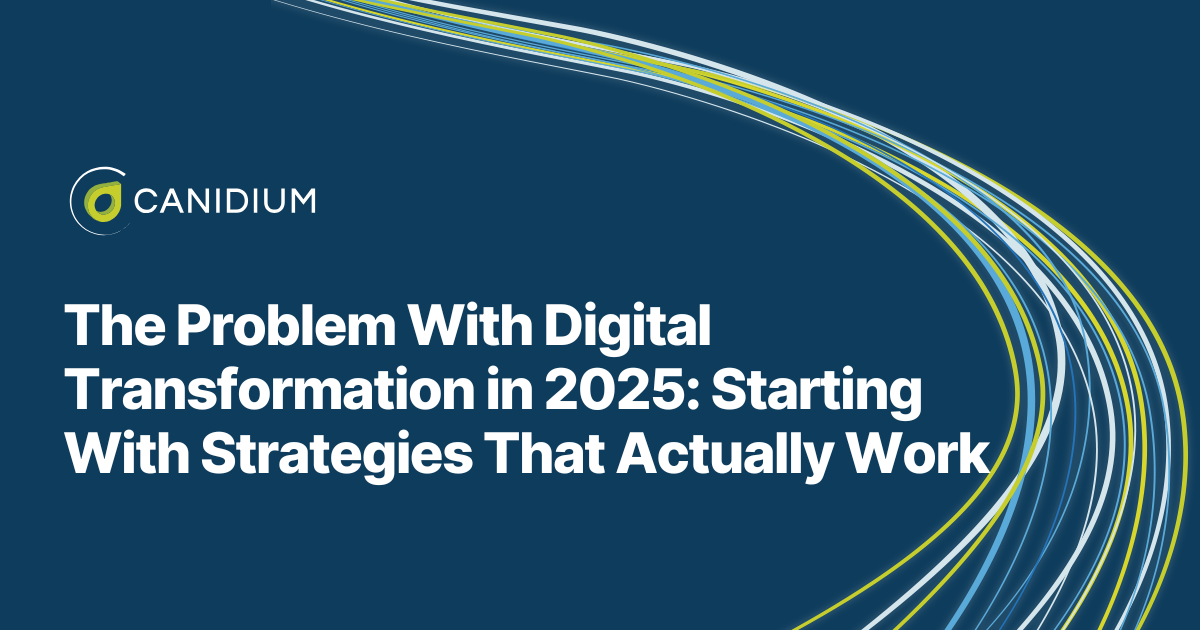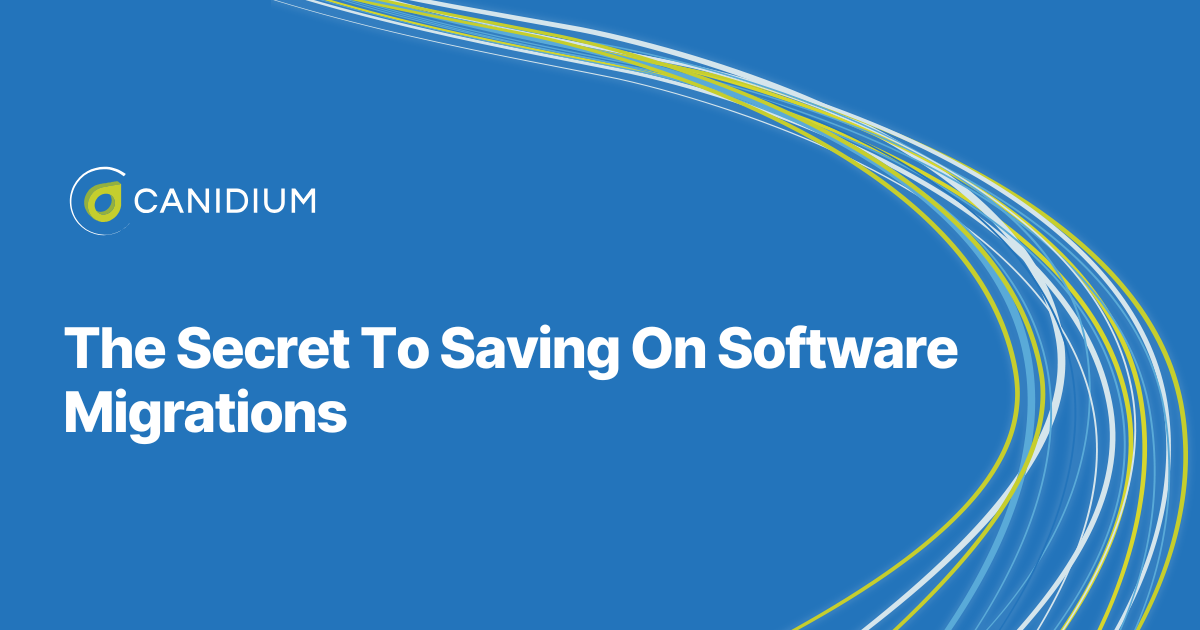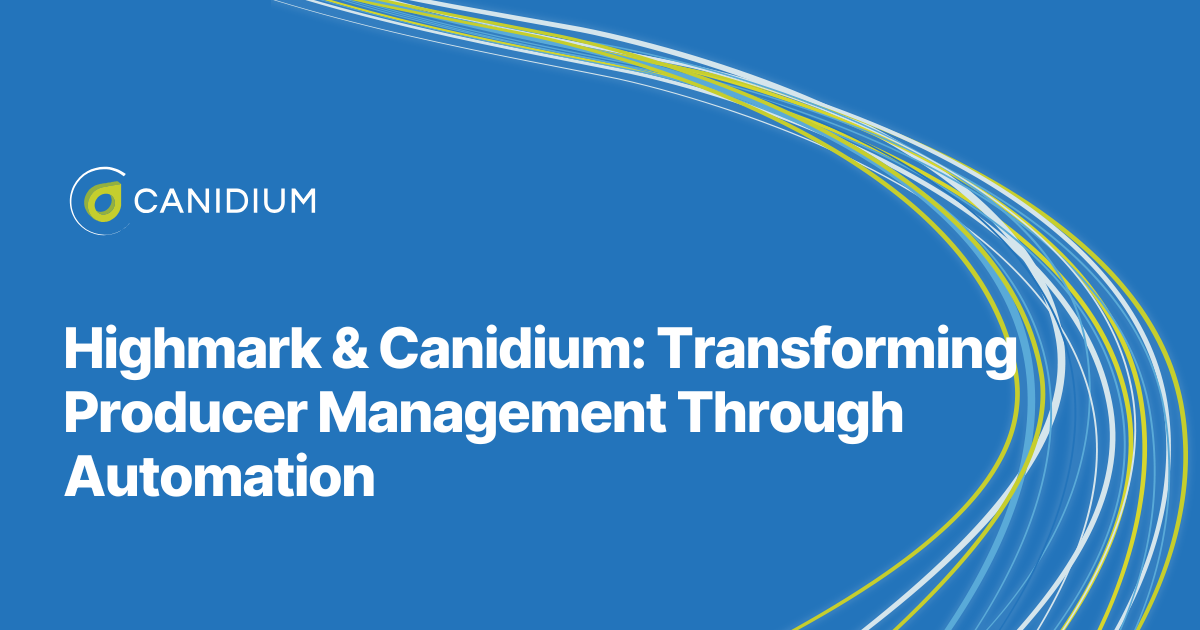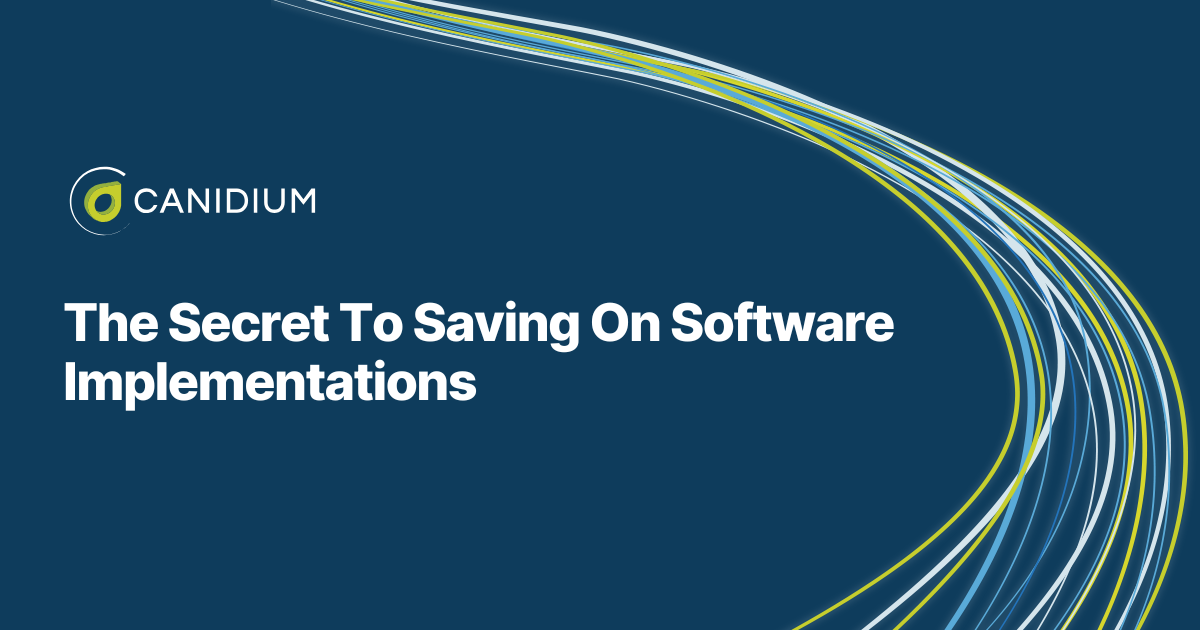The Problem With Digital Transformation in 2025: Starting With Strategies That Actually Work
73% of global business executives expect revenue to grow less than 10% in 2025. The general economic outlook isn't optimistic. Between inflationary pressures, tariff uncertainty, supply chain disruptions, and overall uncertainty regarding market conditions, business leaders feel like they are on shaky ground.
That economic conditions are challenging is not news to most of us, but regardless, the roadmap to revenue growth isn't necessarily clear. Moving targets and novel external barriers seem to foil plans before they have the chance to come to fruition.
You can't control these external factors, but you do have control over internal ones. The only way to implement a revenue growth business strategy in 2025 that can't be disrupted is to focus on operational efficiency and digital innovation opportunities within your own organization. Leverage novel artificial intelligence, machine learning, and automation digital tools to streamline and become agile enough to expand revenue in an underperforming economy.
The Problem With Digital Transformation
Like many buzzy concepts, digital transformation is often notoriously overhyped and, as a consequence, misunderstood. All too many digital transformation efforts fail, with one study showing that only 35% of digital transformation efforts successfully achieve their objectives. Moreover, only 20% of CFOs report that IT investments show business value.
Digital transformation is costly, and the results are frequently underwhelming. But on the other hand, the cost of sticking with legacy technology and skipping necessary upgrades is likely worse. The latest research into revenue growth in 2025 found the two top internal barriers are:
- Companies' inability to enable digital infrastructure to meet new external business conditions and scale (49%, up from 40% last year).
- A lack of flexibility in existing assets and infrastructure to respond to external demand (45%, up from 33% last year).
If you aren't implementing modern digital infrastructure, you risk falling behind competitors. So, the solution to the digital transformation problem isn't to avoid upgrades but to adopt a smarter approach. With the right strategies, timelines, and experts in place, you can ensure project success.
Do You Need to Undergo a Digital Transformation?
Above all else, establishing the need for a new digital solution is a foundational component of a smart digital transformation strategy. Before investing in new digital technologies, make sure this solution doesn't just fit your existing business processes but solves critical problems and offers additional, tangible benefits. A new platform is only a true solution if it addresses a clear business pain point.
To successfully maximize your digital transformation ROI, you need to pick the right solution. This means moving beyond a generic idea of "transformation" and identifying the specific operational challenges that are hindering your revenue growth for your business model. For most sales organizations, these challenges fall into a few key areas. A partnership with a third-party software implementation partner and consultancy like Canidium involves a deep discovery process to identify your specific needs and match them to the ideal digital technology.
Here's how to determine your need and which digital solution might be the right fit:
Assess Your Symptoms and Business Challenges: Which Problem Are You Solving?
Start by evaluating the specific inefficiencies your sales and operations teams face. Your symptoms will point toward the right solution.
- If you are struggling with complex, error-prone commission calculations, spending weeks in Excel, and dealing with constant disputes from the sales team, your primary need is likely Incentive Compensation Management (ICM). Manual processes not only drain resources but also erode trust and motivation.
- If your sales planning is disconnected from execution, with misaligned territories, unattainable quotas, and a lack of visibility into performance, you need a more holistic Sales Performance Management (SPM) solution. This goes beyond commissions to include territory and quota planning (T&Q) and advanced analytics.
- If your quoting process is slow, inconsistent, and results in non-profitable deals, the bottleneck is your Configure, Price, Quote (CPQ) process. A lack of guardrails and automation here directly impacts revenue and margin.
- If your CRM is failing to provide a single source of truth, leading to poor user adoption and disconnected data, you may need a CRM enhancement or a specialized application built on your existing platform, like Salesforce.
- If you lack a centralized pricing engine and your strategy is difficult to update—leading to inconsistent discounting, margin leakage, and an inability to execute promotions effectively—your core issue is with Pricing Management. A decentralized or outdated pricing system forces your team to compete on ad-hoc discounts rather than strategic value, directly eroding your bottom line.
Matching Digital Technologies to Your Business Strategy
Once you've identified the core problem, Canidium can help you select the right platform based on your company's specific characteristics, ensuring your digital transformation initiatives serve your business goals—not the other way around.
For Large Enterprises with Complex, Global Digital Transformation Needs:
- The Digital Transformation Challenge: You operate globally with thousands of sellers, multiple complex sales hierarchies, diverse go-to-market strategies, and intricate incentive plans. You need a highly configurable and powerful platform that can handle massive data volumes and unique digital business rules.
- SAP Sales Cloud might be the right choice. Its extreme configurability makes it a powerhouse for organizations that cannot be constrained by out-of-the-box solutions. Learn about SAP implementation benefits, timelines, and pricing in this comprehensive buyer's guide.
For a Digital Transformation Strategy That Prioritizes Sales Execution and Motivation:
- The Digital Transformation Challenge: Your primary goal is to motivate your sales force with clear, transparent incentive plans and provide them with real-time visibility into their earnings and performance. You need a solution that is powerful and offers a user-friendly customer experience for sellers and administrators.
- Xactly Incentive Compensation Management (ICM) excels in this area. Xactly Incent is designed to automate even the most burdensome processes. Businesses looking to integrate data analytics seamlessly or build custom workflow configurations can learn more about Xactly in this Buyer's Guide.
For Organizations Needing Agile and Intelligent Pricing:
- The Digital Transformation Challenge: Your market is volatile, with costs, competitor actions, and customer expectations changing constantly. Your current pricing and business model is static, slow to update, and relies on spreadsheets or legacy systems that can't keep pace. You lack the ability to scientifically test and deploy new pricing strategies, leading to chronic margin erosion and a reactive, rather than proactive, commercial posture that erodes the customer experience.
- Pricefx provides a fast, flexible, and intelligent platform. As a cloud-native solution, it leverages AI and real-time data to help you analyze, manage, and optimize your entire pricing lifecycle—from setting optimal prices to managing rebates and promotions. Learn more about Pricefx implementations in this Buyer's Guide.
The First Step to Digital Transformation is a Conversation
Ultimately, the "right" digital transformation strategy takes more than just picking a good software brand; it's about establishing a strategic partnership to diagnose your unique challenges and implement a digital tool tailored to your business model. The most successful projects begin not with a software demo but with a thorough needs assessment and a clear roadmap. By engaging with an experienced consultancy like Canidium, you ensure that your digital transformation strategy is a true catalyst for growth, capable of delivering measurable ROI in 2025 and beyond.
5 Digital Transformation Strategies For Smart Application Modernization
Application modernization is the process of updating or replacing outdated business applications with newer, more agile, and scalable solutions that improve the customer experience. Instead of a "big bang" approach to digital transformation, which attempts to overhaul everything at once, smart application modernization focuses on targeted improvements to key functions like data analytics that deliver the most significant impact. Here are key strategies to ensure your digital transformation strategy and modernization efforts are successful:
1. Conduct a Comprehensive Portfolio Assessment:
Before you can modernize with emerging technologies, you need a clear understanding of your existing application and digital solutions landscape. A thorough assessment should be your first step. This involves:
- Inventory: Catalog all current applications and the business processes they support to diagnose operational efficiency challenges.
- Analysis: Evaluate each application based on its business value, technical condition, and operational cost.
- Prioritization: Categorize digital business applications into groups: those to retire, those to retain as-is, those to rehost (lift-and-shift to the cloud), those to refactor (restructure existing code), and those to rebuild or replace entirely. This prioritization ensures that resources are focused on where they will generate the greatest return in terms of your larger business goals.
2. Adopt a Phased and Agile Digital Transformation Strategy:
The days of multi-year, monolithic digital transformation projects are over. In 2025, agility is paramount. A phased approach to digital transformation, where modernization occurs in smaller, manageable stages that don't disrupt larger business operations, offers several advantages:
- Faster Time-to-Value: Incremental changes deliver business transformation benefits more quickly.
- Reduced Risk: Smaller projects are easier to manage and contain potential failures, reducing risk exposure in your digital transformation strategy.
- Continuous Learning: Each phase provides valuable insights that can be applied to subsequent stages, allowing for continuous improvement of the business transformation process itself and improving the customer experience after going live.
3. Prioritize Cloud-Native and Composable Architectures:
To build the flexibility needed to respond to market shifts, move away from rigid, on-premise legacy systems. Embrace cloud computing through native digital innovations, such as containers and microservices. A composable architecture allows you to assemble and reassemble your digital landscape as needed, creating a more adaptable and resilient infrastructure. This modular approach to digital transformation enables you to scale specific functions independently and integrate new technologies, like AI and machine learning, more seamlessly.
4. Focus on Data Integration and Accessibility:
Modern applications are only as powerful as the data they can access and utilize. A successful digital transformation strategy must include a robust data integration plan. This means breaking down big data silos and ensuring that information flows freely and securely through your digital landscape between new and existing cloud computing systems. A unified data platform not only empowers your new applications but also provides the clean, accessible data required for advanced analytics and AI-driven insights, turning your data into a true strategic digital asset and facilitating data-driven decision-making.
5. Champion Change Management and User Adoption in Digital Innovation:
The most technologically advanced solution will fail if your team doesn't use it. Digital transformation is as much about people as it is about technology. A dedicated change management strategy is not an optional extra; it is a core component of success. This should include:
- Clear Communication: Articulate the "why" behind the changes to the digital landscape and outline the benefits of your digital transformation strategy for both the company and individual employees.
- Comprehensive Training: Provide hands-on training to ensure everyone is comfortable and proficient with the new digital channels and cloud platforms.
- Feedback Mechanisms: Create channels for employees to provide feedback on your technology roadmap and feel involved in the digital transformation process.
By focusing on these strategic pillars, businesses can demystify digital transformation and turn it from a risky, all-or-nothing gamble on SaaS applications into a predictable and powerful engine for growth. In the uncertain economic landscape of 2025, the smartest investment you can make is in building a more efficient, agile, and resilient organization from the inside out.
From Digital Transformation Strategy to Reality: Winning in 2025
The economic headwinds of 2025 demand more than just a vague commitment to "go digital." As we've seen, true digital transformation is not a single, monolithic project but a series of precise, strategic decisions. It begins with an honest assessment of your unique business pains—whether they lie in your commission process, sales planning, quoting, or pricing—and selecting the right technology to solve those specific problems.
However, choosing the right tool for your digital landscape is only half the battle. The success of your initiative hinges on a smart digital transformation strategy. By conducting a thorough portfolio assessment, adopting a phased and agile rollout, building on a flexible cloud-native architecture, unifying your data, and championing change with your people, you move beyond the hype and mitigate the risks that cause so many digital transformations to fail.
Ultimately, navigating the complexities of 2025 requires focusing on what you can control. You can control your internal processes. You can control your technology choices. You can control how you empower your teams. Instead of being disrupted by external pressures, a well-executed digital transformation allows you to build a resilient, agile, and profitable organization from the inside out.
The journey starts not with a leap of faith but with a confident first step. If you're ready to build a revenue engine that's ready for any challenge, the time for a strategic digital transformation conversation is now.








